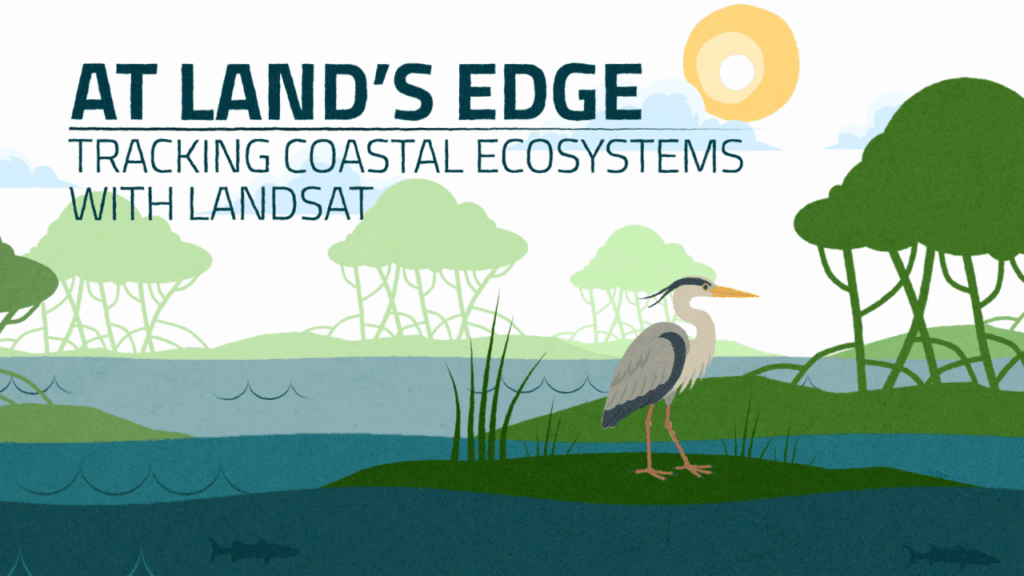By Matt Radcliff, NASA Goddard Media Studios
July 26, 2021 • Landsat 9, launching September 2021, will collect the highest quality data ever recorded by a Landsat satellite, while still ensuring that these new measurements can be compared to those taken by previous generations of the Earth-observing satellite. Landsat 9 will enable or improve measurements of water quality, glacial ice velocity, crop water usage, and much more.
For five decades, we have relied on Landsat’s high-quality, science-quality observations to understand and protect our home planet.
The Landsat Program is a series of Earth-observing satellite missions jointly managed by NASA and the U.S. Geological Survey (USGS). Landsat satellites have been consistently gathering data about our planet since 1972.
====VIDEO TRANSCRIPT====
Soaring high above our home planet, Landsat 9 will provide critical data on how Earth is changing. Circling the globe every 99 minutes, 14 orbits a day, continuing decades of observations.
The impact of the Landsat record is the sheer amount of information we’ve collected all across the world since 1972. And it is high-quality science-caliber data, enabling us to accurately track changes over time. Now, fifty years of Las Vegas expanding may be fairly simple to notice, but we can also observe short-term changes, like the growth of farm crops through a season in south central Kansas.
With more than one Landsat satellite in orbit, plus the European Sentinel-2 satellites, we will get data several times each week, improving our ability to track crop health and more.
The temperature measurements from Landsat 9 will be used to calculate how much water was used by each farm field. The Central Platte Natural Resources District, like many throughout the western United States, relies on Landsat data to manage irrigation and increase water efficiency.
Landsat 9 will also improve monitoring of coastal waters. The increased precision in data sent back from Landsat 9 will allow finer distinctions in the levels of light reflected from water, making it easier to identify any pollutants that are present.
Around the globe, growing population and expanding development result in higher amounts of runoff, damaging sensitive near-shore ecosystems. Landsat’s long history lets us look into the past to see the effects of land use changes.
The consequences of climate change can also be seen in Landsat’s long data record. Scientists have used Landsat to track shrinking glaciers for decades, and Landsat 9 will continue that effort. The glaciers in the Himalayas are a key water source for billions of people in south Asia. Due to global warming, the increased meltwater collects in large lakes at high altitudes and poses a risk to downstream villages. Landsat data is essential to monitor the growth of these lakes.
Because of their location, glaciers are not easy to study in person. But Landsat’s view from space allows us to study glaciers all around the globe. Landsat 9’s improvements will make it easier to see features on the glacier surface. With that, we can better track how fast the glacier is moving. Knowing the velocity of the ice now, and how it has changed over the past decades, helps us forecast likely contributions to rising sea levels in a changing climate.
Landsat 9 joins Landsat 8 to continue the unbroken string of Landsat data. For five decades, we have relied on Landsat’s high-caliber, science-quality observations to understand and protect our home planet.
And while Landsat 9 begins sending back data, we are already planning for the next evolution in the Landsat program.
[on-screen text] Landsat is a joint program of NASA and USGS
========





